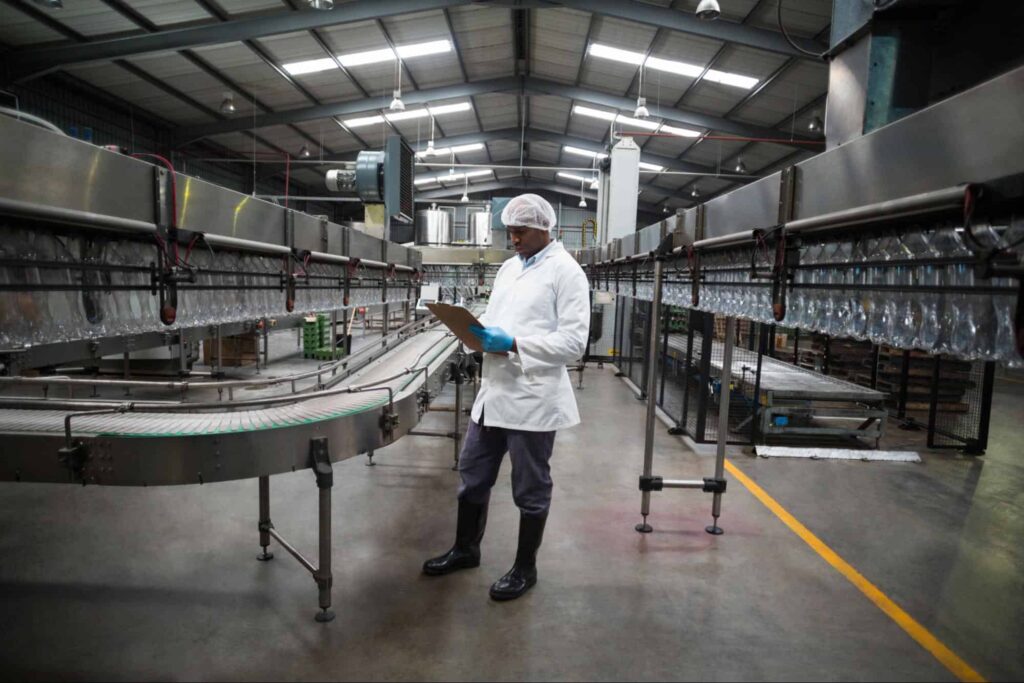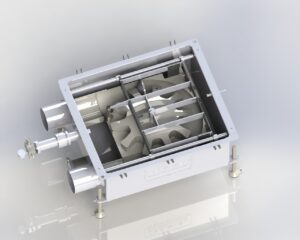In the dynamic world of food production, the movement and handling of raw materials stand at the forefront of efficiency and safety. Enter the specialty grain conveyor systems in food processing – a game-changer that has revolutionized how we transport and manage vast quantities of grain. This isn’t just a regular conveyor belt system for moving produce from point A to B. It’s an intricate dance of precision, ensuring that grains remain uncontaminated, undamaged, and ready for the next production phase.
The following blog post will introduce you to the different types of these systems and common issues that crop up when handling specialty grains. It will also provide suggestions on how to avoid these problems so your process can run smoothly.
What Are Specialty Grain Conveyor Systems in Food Processing?
The food processing industry is always looking for new ways to make its processes more efficient. Each product type has a belt conveyor system that works best for that specific food. The biggest issue with conveying specialty grain is that it’s delicate and needs to be gently transported.
Some examples of the bulk material handling equipment used for these products are pneumatic conveyors, belt conveyors, and bucket elevators. However, these specialty grain conveyors are not the only options. The equipment used depends on what is being transported, where it’s going, and how fast it needs to go there.
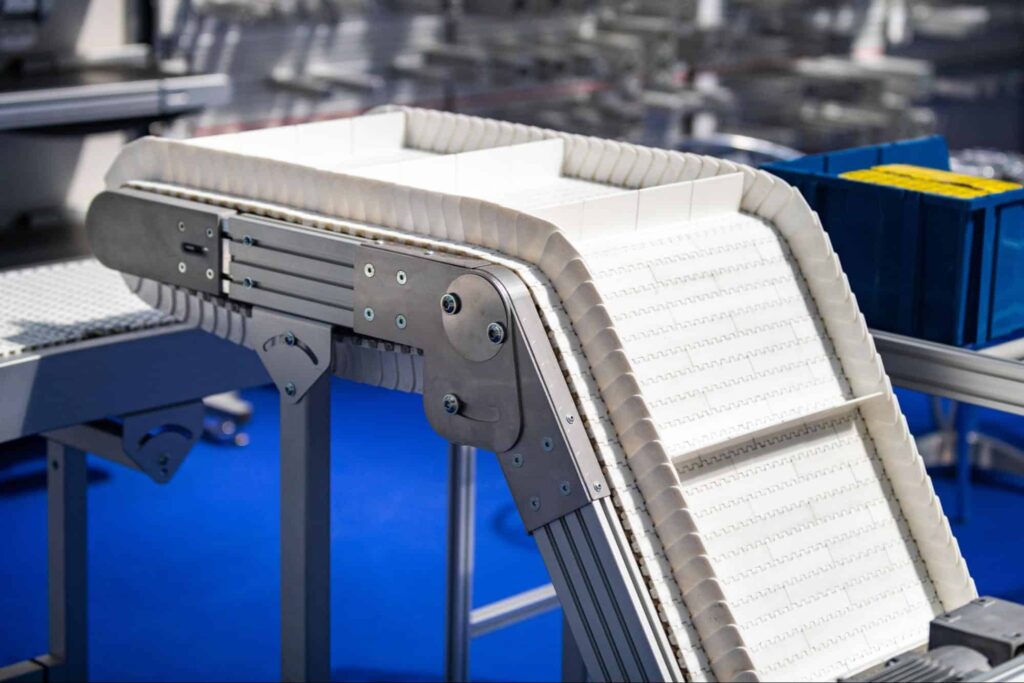
Common Types of Specialty Grain
The most common specialty grains used in the food industry include rye, oats, amaranth, rice, barley, millet, and similar. Let’s take a closer look at how each of these is handled.
Rye
Rye is commonly used in flour, bread, beer, and whiskey, but it’s also a great option for livestock feed. It is an excellent source of dietary fiber and doesn’t cause as high an insulin response as wheat. Therefore, rye is commonly used by those looking for a way to reduce their risk of diabetes.One of the key properties of rye is its porous structure. This allows for higher satiation, which means the person eating it will be full for longer. However, this porous structure is challenging to preserve during processing.
Oats
Oats are one of the most popular cereal grains. The worldwide demand for oats is constantly increasing because of the numerous health benefits they provide (in 2020, this demand exceeded over 25 million metric tons!). Oats are high in fiber, low in fat, heart-healthy, and can lower cholesterol levels.Oat processing requires special equipment due to its soft outer layer. Even though oats can be ground into oat flour, not all food processors want to do this. Some would like to preserve the whole oat grain because it contains more fiber (in the form of steel-cut oats or rolled oats). The equipment needed to process oats should be able to gently separate the hull from the kernel itself without damaging either one
Amaranth
Amaranth has been cultivated for thousands of years in Mexico, Peru, and several other locations worldwide. The protein content in amaranth is considerably higher than in other cereal grains. It also contains more calcium and iron than most grains.
Amaranth grain is usually transported using pneumatic conveyors or conveyor belts. However, these systems are not always the best option. The equipment used to transport amaranth depends on how much damage it can sustain during processing and storage.
Quinoa
Quinoa is a seed, though it is referred to as a whole grain. The seed is grown in South America and has been an essential part of the Andean diet for over 3000 years! The nutritional value of quinoa includes high amounts of fiber, protein, and iron.
The biggest issue with conveying quinoa is that it is a dry, brittle grain. The brittle nature of quinoa means it is highly susceptible to damage, especially if the product is stored for a long period. The best equipment options for this type of grain are enclosed systems that smoothly transport it without creating too much friction. The equipment should also handle the large size of quinoa seeds compared to traditional grains.
Rice
One of the most versatile grains is rice. It can be used on its own or to make different products like flour, starch, oil, and many more. The majority of the world’s population relies on rice as their primary source of food (over 50%!).
Rice needs a special type of conveying system, especially if it comes in the form of parboiled rice. Parboiled means rice has been processed under high temperature and pressure. In that case, the rice grain handling equipment needs to be used for both dry and wet grains while still preserving their shape during the process.
Barley
Another ancient grain, barley, has been farmed for over ten thousand years. Most barley is used to make beer, but it can also be turned into barley flour or barley flakes and grits. It contains high levels of iron and manganese as well as many B vitamins.
If exposed to strong vibrations, barley kernels may shatter. The best way to transport barley is through tubular cable conveyors. The key thing to remember when choosing a system for this grain is that it needs careful transportation because it does not handle stress well.
Millet
Like most grains on this list, millet is another excellent gluten-free alternative to wheat, especially for those who have celiac disease.
During conveying, millet should be exposed to environmental factors as little as possible. An enclosed system will be the best choice for this grain, such as one found in tubular conveyors.
Common Issues During Conveying
As outlined above, each specialty grain type requires carefully thought-out grain handling industrial conveyor belt equipment. The main concern when choosing a conveyor system is damage during transit, but there are others to consider. This being said, let’s check the common issues that could arise during conveying.
Contamination and Cross-Contamination of Foreign Materials Can Change Taste
In food processing, contamination is defined as the addition of an unwanted substance that is not normally expected to a process or product. The presence of foreign materials can cause problems with taste, consistency, and safety in many cases. Cross-contamination occurs when an ingredient is unintentionally mixed with a different product that may come from the same production line.
Both are serious concerns in the food industry, and they can be the result of a poor conveyor belt for food equipment. The best way to prevent these issues is by having a conveyor system that does not allow any foreign material inside, such as a fully enclosed system that reduces the risk of (cross-)contamination.
Dust Poses Health Risks
Grain dust is very fine and can be flammable, which makes it a safety hazard. It can also be a respiratory hazard, especially if the particles are too small and can enter pores in the lungs. The dust from specialty grains is no different – it should be handled with care because it poses health risks for those who come into contact with it.
The presence of this dust also interrupts the manufacturing process by clogging filters or machinery components. The best way to reduce exposure to grain dust and dust accumulation during conveying is by choosing a fully enclosed conveyor system.
Damaged Product During Transport Will Be Unusable
Specialty grains can take all sorts of damage during transport – they can be crushed, chipped, or broken, for example. The tiny particles are very fragile and can quickly come apart during conveying. This is especially true if the conveyor system uses sharp turns or high speeds to transport the product quickly through production lines.
The main downside to damaged grain is that it becomes unusable because its nutritional value has been reduced. The USDA Federal Grain Inspection Service has a range of standards that define the level of damage allowed for each type of grain, measured by kernel size.
If the inspection discovers that the product has been damaged, it will downgrade the quality, and the producer will get a lower price for their product. The best way to prevent this is by using specialty grain conveyors with gentle curves that do not break any part of the kernel during transportation.

Important Conveyor Features
The typical specialty grain conveying issues can be mitigated by selecting the right custom conveyor belt for the warehouse that will do an excellent job. The following features are essential to look for when making your selection:
Enclosed System
We’ve already established that specialty grains are susceptible to contamination and cross-contamination during conveying, which is why the system must be fully enclosed. This also reduces the levels of dust exposure and the risk of dust explosions. The enclosed system will also keep the heat, humidity, and airflow isolated from the grain to not affect its quality during transport.
Speed Control
The quality of the grain largely depends on the speed of the conveyor system. The faster it moves, the more likely damage will occur, and there is a bigger chance for cross-contamination to spread among multiple types of grains being processed through production lines at once.
Slowing down conveying speeds ensures that particles arrive intact with minimal wear from friction between them, increasing their marketability and nutritional value. The best way to achieve this is by using a variable-speed drive system that can adjust speeds depending on demand.
Modular Design
If your facilities don’t have an abundance of floor space, you might need to consider a conveyor system that can be added on at any time. The best way to do this is by opting for an enclosed modular design, like the components Cablevey Conveyors offers.
The modular conveyors are built in sections and can easily link together. They also come complete with all of the necessary equipment to make installation quick and easy. The modular design spreads your investment out over time rather than requiring you to spend all of the money upfront for a single conveyor system that might not even fit into your facility.
Temperature and Humidity Control
Specialty grains need an optimized environment during transportation to ensure they maintain their quality. The heat and humidity can affect the degree of damage that has occurred and cause other issues like mold growth or contamination. The best way to avoid this is by investing in a specialty grain conveyor system with temperature and humidity controls.
Easy Cleaning and Sanitizing
The last thing you need is a conveyor system with nooks and crannies where bacteria can hide. At the same time, they grow into larger colonies throughout the day – this increases your chances of having equipment failures or process shutdowns due to food safety issues. Combat this by choosing a specialty grain conveyor system with all the necessary accessories and equipment to ensure easy cleaning.
Scheduled Maintenance
A conveyor system that breaks down and shuts you down for hours or days at a time costs your business money if it isn’t properly maintained. Avoid these costly repairs by opting for specialty grain conveyors with scheduled maintenance plans.
You should also keep documentation of all inspections, work orders, and other services that are performed throughout the year. The more proactive you can be with your maintenance, the less likely it is that something will go wrong and cost you time or money in repair work.
Best Specialty Grain Conveyor
Considering all the features listed above, let’s take a look at some of the best specialty grain conveyor systems on the market today.
Tubular Drag Cable Conveyors
The one option that meets all the requirements we’ve mentioned is the Cablevey tubular cable drag conveyor. A tubular cable conveyor is an enclosed system that consists of a tube through which a nylon-encased stainless steel cable pulls evenly spaced circular discs.
These discs gently push the material along, and the cable ensures that it moves at a constant speed. It is ideal for fragile materials like specialty grains and preserves energy for efficient operation. The Cablevey tubular cable and disc conveyor has a modular design that can fit practically anywhere, making it perfect for facilities with limited floor space.
Belt Conveyors
One of the most frequently used conveyors in any industry is the belt conveyor. The best option for specialty grain is one with an enclosed system to protect it from contaminants. While the belt is ideal for lowering product damage since the transported material doesn’t actually move on the belt, it has a few drawbacks.
Namely, belt conveyors can function only horizontally or at a slight angle – they cannot be used vertically. This limits their use in spaces that aren’t large enough for a belt to fit. The belts also take up more space than other conveyor systems since they require at least four feet of clearance above the conveyor and below it – this can make them difficult to utilize in tight spaces.
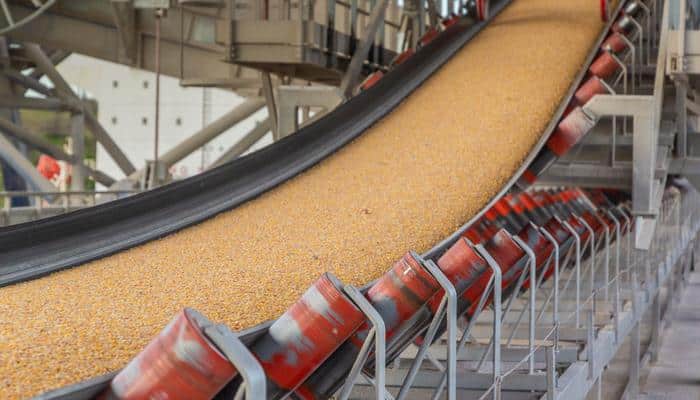
Bucket Elevators
Unlike conveyor belts, bucket elevators can be used vertically and horizontally, and they’re not too difficult to install – however, they can be difficult to clean. Bucket elevators consist of many moving parts that need to be regularly serviced and maintained to continue working correctly. Maintenance often involves disassembling the parts, which can be time-consuming.
Pneumatic Conveyors
Pneumatic conveyor systems are fully enclosed and can fit into tight spaces. However, they function based on positive pressure, which means that they’re not ideal for use with fragile materials. Pneumatic conveyors move material at incredibly high speeds, which can cause damage to its integrity.
If you choose to adjust the speed of the conveyor – lower it for fragile materials, for example – it can take quite a bit of electric power to maintain the speed. The power needed to run a pneumatic conveyor can drastically increase your electric bill each month, making it an expensive option for specialty grain processing facilities.
Screw or Auger Conveyors
Even though screw or auger conveyors are low maintenance and relatively inexpensive to repair, they’re not the best option for specialty grains. The material is moved by a screw or auger that moves grain in a rotating fashion – this means that the grain comes into contact with at least two surfaces of the conveyor during transportation.
The problem with these types of systems is that they don’t allow for a gentle transition. The grain is often jostled and damaged as it moves along the conveyor, making it an undesirable option if you’re looking to preserve your grains’ integrity.
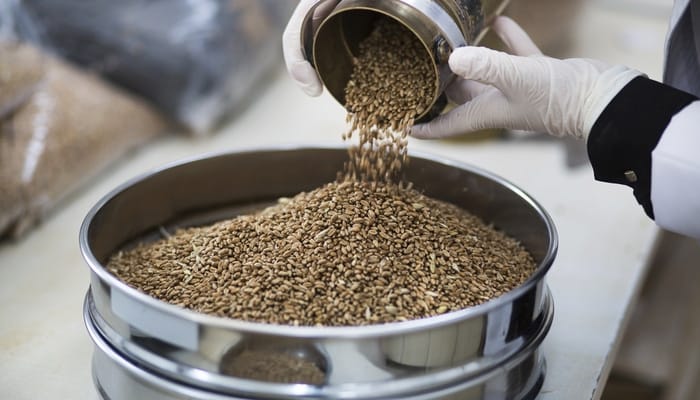
Keep the Specialty Grains From Contaminants With the Best Conveyor System
The best conveying option for specialty grains is definitely the enclosed system since it protects from any possible contaminants. While options like belt conveyors and bucket elevators have merits, the tubular drag cable conveyor stands out as the gold standard. As you blueprint your conveyor strategy, remember: the grain’s nature, transport speed, and environmental controls are pivotal. With a keen eye on modular designs and proactive maintenance, you’re set for success. If you’d like to know more about the ideal conveyor system for your specialty grain processing plant, contact us at Cablevey today.

